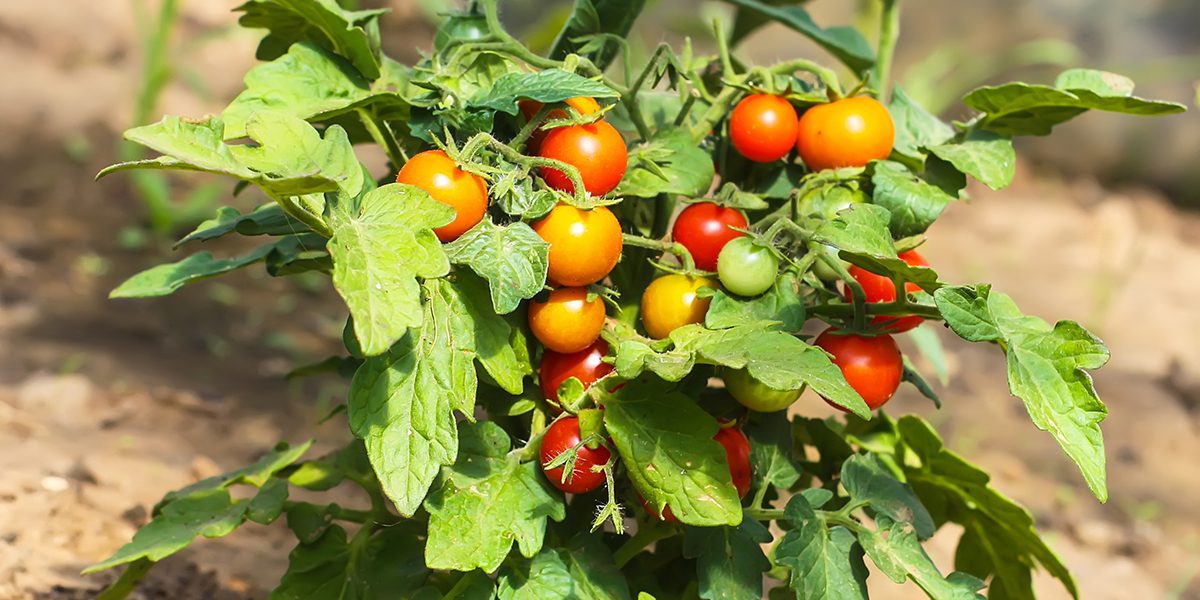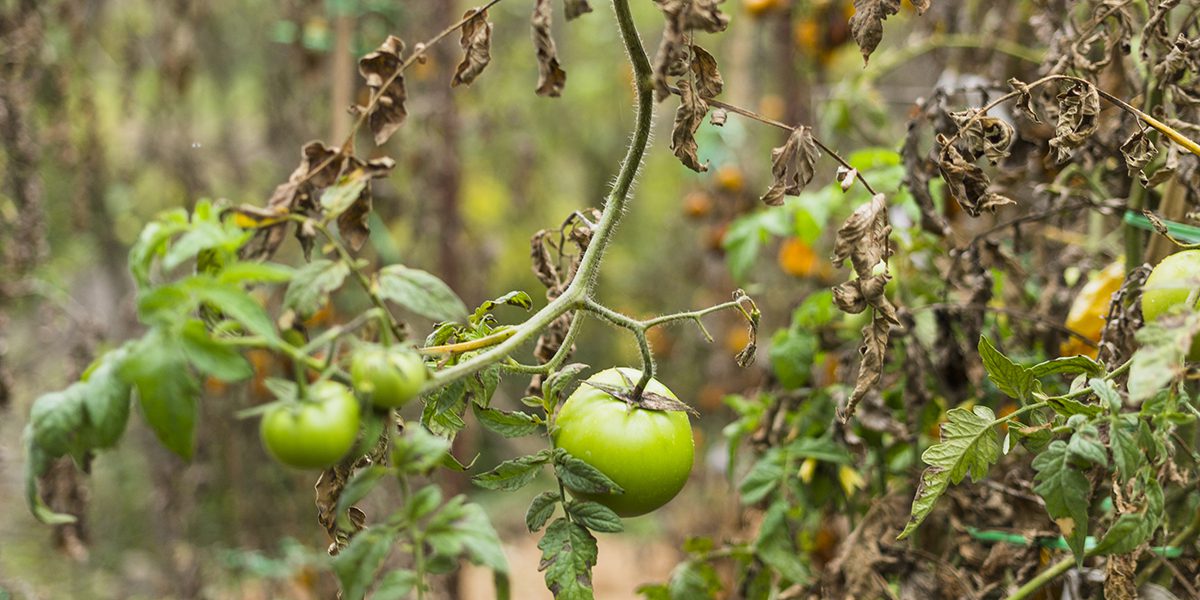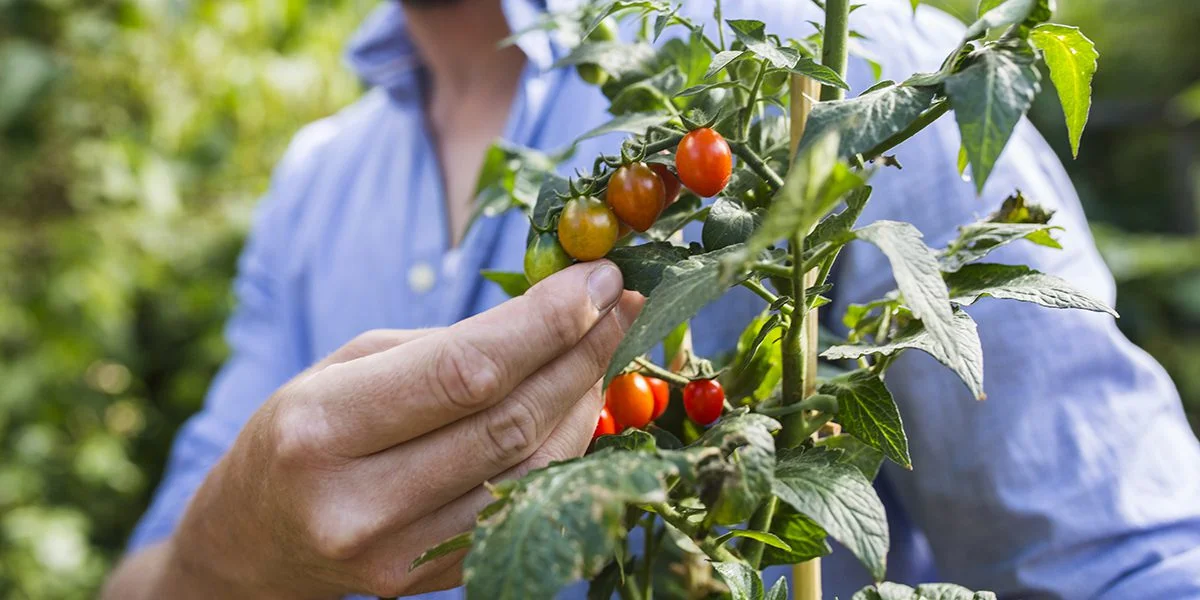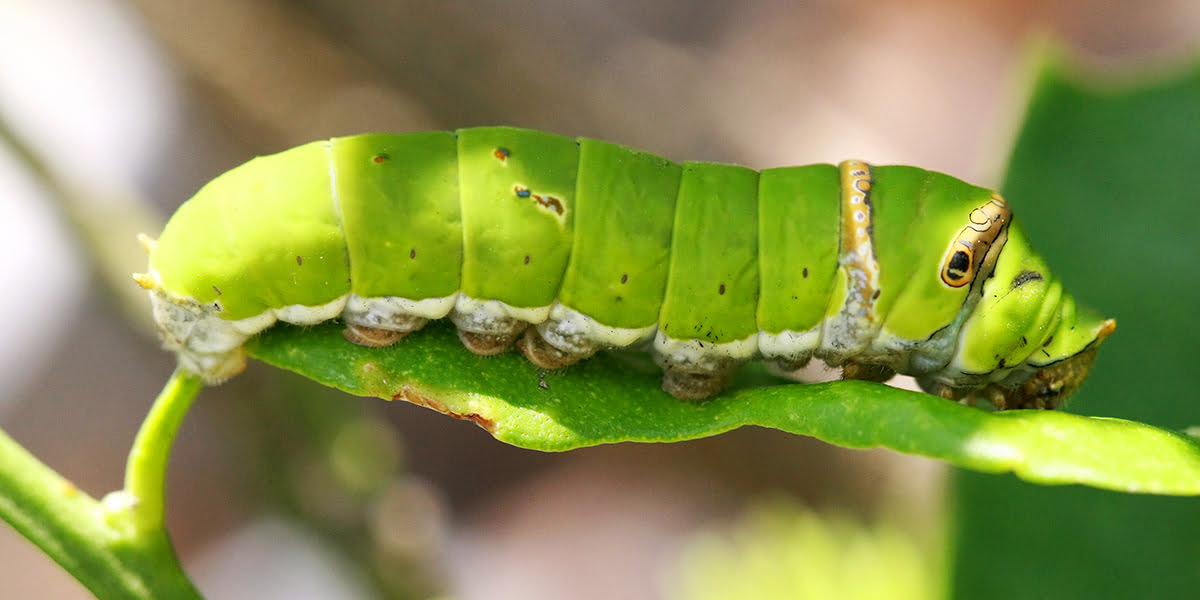Could anything be more rewarding than a bounteous crop of tomatoes off the vine from your garden? Planting tomatoes allows you to enjoy the fruits of your labor while saving on groceries and providing healthy food for your family.
Tomatoes are an easy crop to grow, making them a favorite for beginner and advanced gardeners alike. However, even the most seasoned gardener may discover browning leaves on their tomato plants and wonder: What does this mean?
Planting tomatoes in The Garden Patch GrowBox™, the tomato planter from A Garden Patch, gives tomato plants the resources it needs to thrive. However, if you see brown patches or brown on the entire leaf, here are some possible causes.
1. Spider Mites
If you see smaller brown specks with webbing, they are likely a sign that your tomato plants are infested with nasty little spider mites.
Spider mites thrive off sucking sap from leaves’ undersides, depleting them of nutrients. The malnourished leaves will turn brown or sometimes yellow and, if left untreated, will lead to the ultimate demise of the plant.
Watering your tomato plants properly helps keep spider mites at bay since they love hot and dry climates. Your tomato plants are happiest when they’re moist, creating a naturally unpleasant environment for spider mites.
If watering isn’t enough to stop an infestation, you can try neem oil or insecticidal soaps.
2. Bacterial Leaf Spot Disease
Bacterial leaf spot disease can spread quickly from the tomato leaf to the entire plant, driven by the Xanthomonas bacteria, which causes brown, water-soaked spots on tomato plant leaves. Eventually, Bacterial leaf spot will infect the fruit as well.
Unfortunately, you will need to dispose of any plant with bacterial leaf spot disease immediately because no known effective treatment exists. Preventive measures are the best bet. Try planting your tomatoes in The Garden Patch GrowBox™, where water moves toward the roots instead of stagnating.
Additionally, using healthy seeds and not watering your plants from overhead will help you enjoy healthy tomatoes.
3. Verticillium Wilt
Another devastating disease that creates browning leaves on tomato plants, Verticillium wilt is a soil-borne fungus caused by Verticillium dahliae. If this disease is not mitigated quickly, it will spread to neighboring plants.
Verticillium wilt usually affects lower-lying leaves first, turning them brown. The disease then spreads to the stems, leaving them frail and wilted. Eventually, it spreads to the entire plant, causing overall devastation.
Since no effective treatment exists, gardeners can take preventive measures such as planting Verticillium wilt-resistant strains of tomatoes. Ensure that the soil in which you plant your tomatoes receives plenty of air to prevent root rot and fungus. This way, you’ll never have to look at browning leaves on your tomato plants and wonder: What does this mean?
4. Not Watering Your Tomatoes Enough
Keeping your plants thirsty could easily contribute to brown spots on your tomato leaves. The good news is that this is an easy fix. If you find a crispy, brown edge developing around the leaves, you likely need to water your plants more.
To correctly water your tomatoes, water at the root of the plant. Tomato roots run deep, so making sure they’re receiving adequate water goes a long way in keeping them happy. Additionally, we do not recommend overhead watering since the roots will not get the moisture they need. Also, water splashing during overhead watering could spread disease.
5. Late Blight
Late blight is another tomato disease for which the only treatment is prevention, as you will need to uproot and destroy any crop that shows signs of late blight.
A fungal pathogen, late blight appears as a light green spot that rapidly transforms into a dark brown. Late blight also appears on stems, often suffocating the vines from nutrients. In humid environments, another telltale sign of late blight is the appearance of a light, fuzzy mold.
Preventing late blight, much like preventing other tomato-destroying conditions, comes down to proper watering, buying disease-resistant plants, mulching around the base of the plants, and practicing good garden hygiene.
6. Early Blight
Unlike many other tomato diseases that we’ve mentioned, you can treat early blight successfully if you catch it early enough. Caused by an air-borne fungus, it appears as approximately half-inch spots on tomato leaves. Despite a similar appearance, early blight is different from bacterial leaf spot, as the spots will darken and develop light green halos.
Though prevention is always the best strategy when keeping your tomato plants healthy, if you see signs of early blight, remove the infected leaves immediately. When you remove them early enough, you can prevent further spread.
7. Canker
Brown leaves on your tomato plants can also be due to a bacterial disease called canker. Signs of a canker infestation are brown patches on tomato leaves and brittle brown edges around the leaf. Unfortunately, canker can spread to the actual tomato fruit as well, leaving lesions with a yellow halo.
Since canker is not treatable, try to prevent it from developing in the first place by buying healthy seeds and watering correctly.
8. Poor Garden Hygiene and Watering Practices
Finally, if you’ve eliminated all other causes and are looking at browning leaves on tomato plants and wondering what it means, it could very well come down to your garden. Creating a healthy environment for your tomatoes is the first step to ensure that your tomatoes will thrive through harvest.

Practicing good garden hygiene and using garden amendments such as dolomite to help your tomatoes get that extra magnesium and calcium they need will go a long way. You can discover more about the benefits that dolomite brings to your garden here.
Additionally, growing your tomatoes with The Garden Patch GrowBox™ prevents many diseases that can cause browning leaves on tomato plants. The Garden Patch GrowBox™ releases premium fertilizer that stops weeds, lets the right amount of air circulate, and makes it impossible to overwater plants.
Order yours today from A Garden Patch by calling (800) 519-1955, and start enjoying fresh, healthy tomatoes from your garden!




